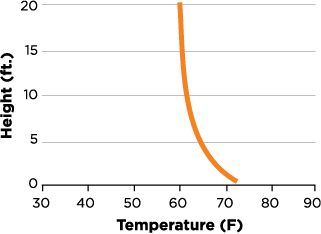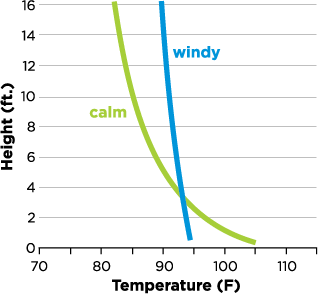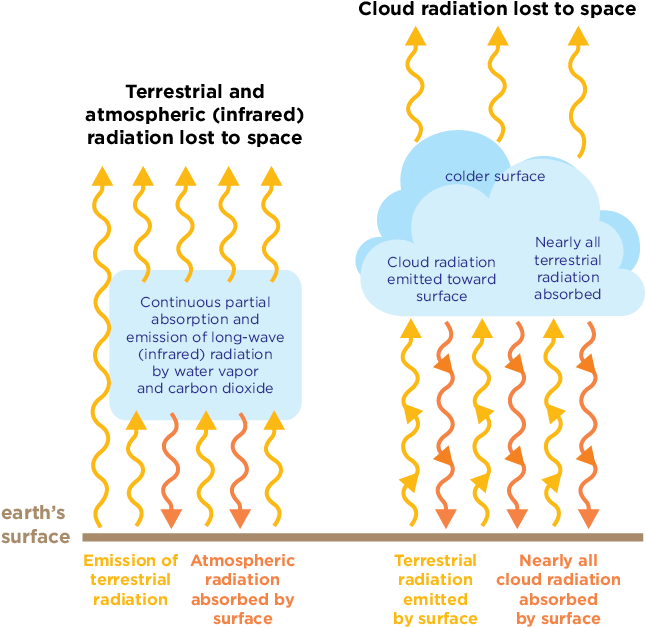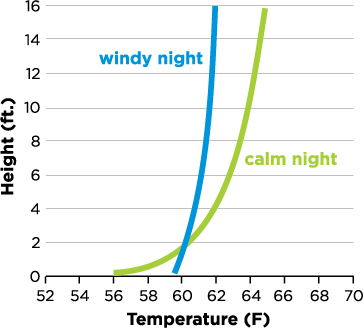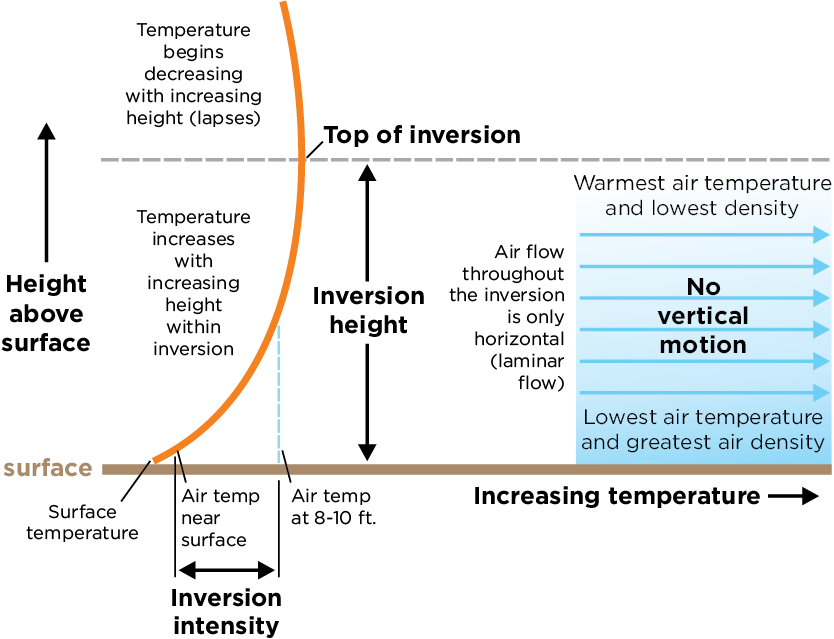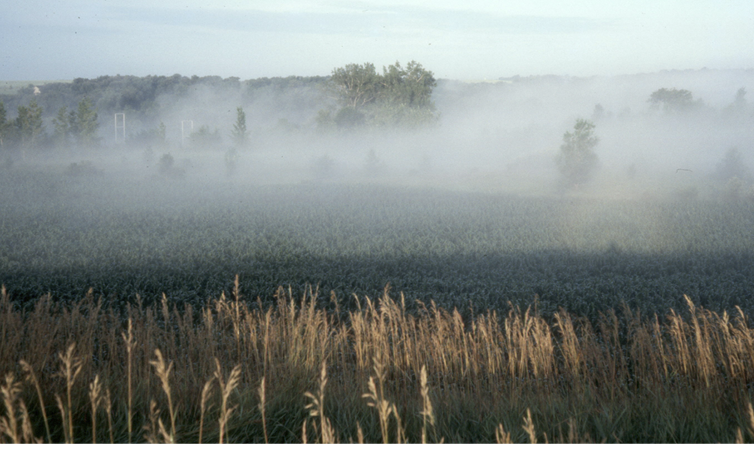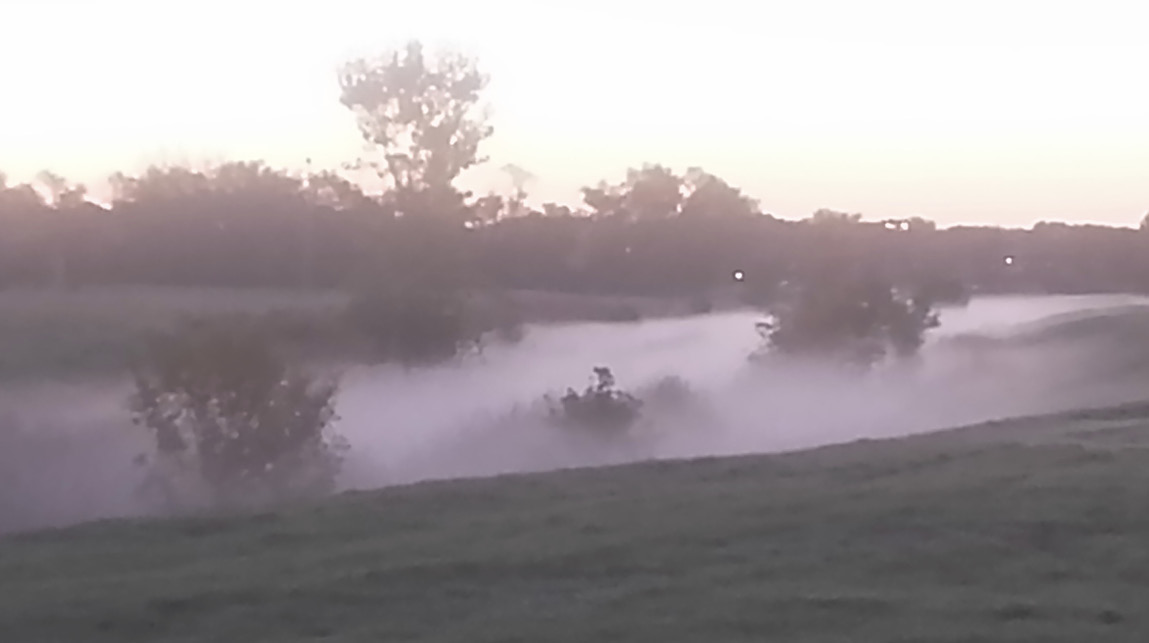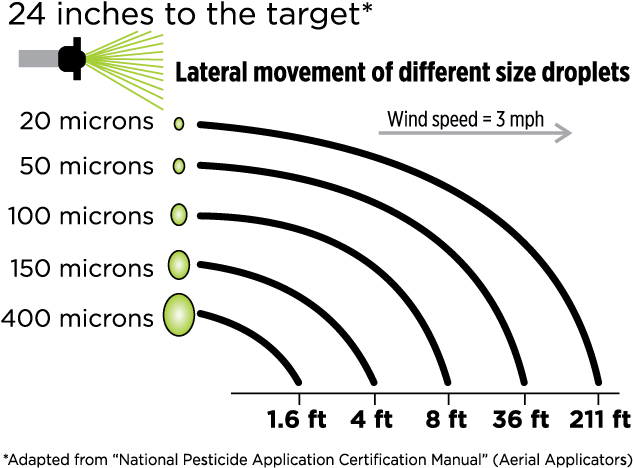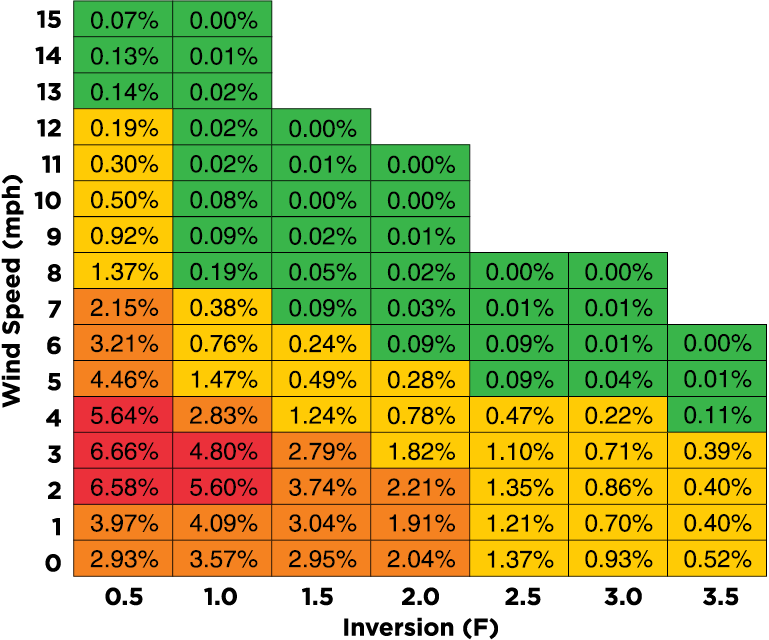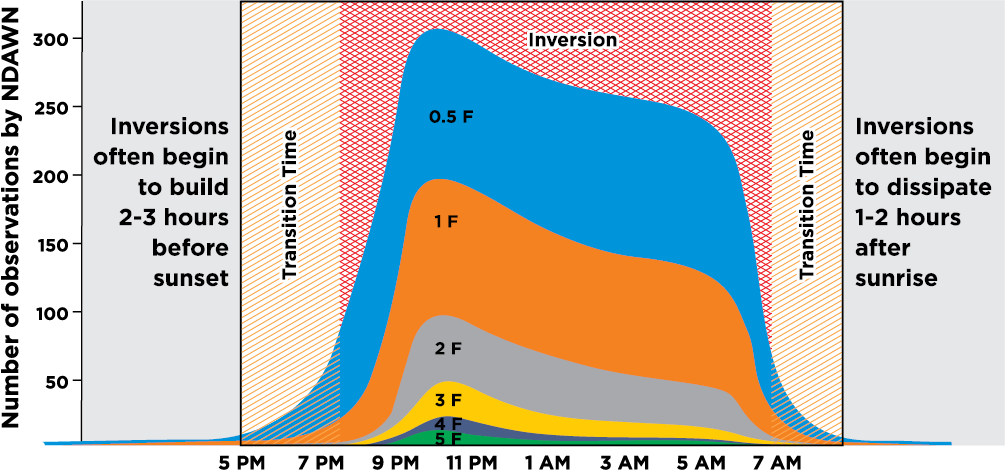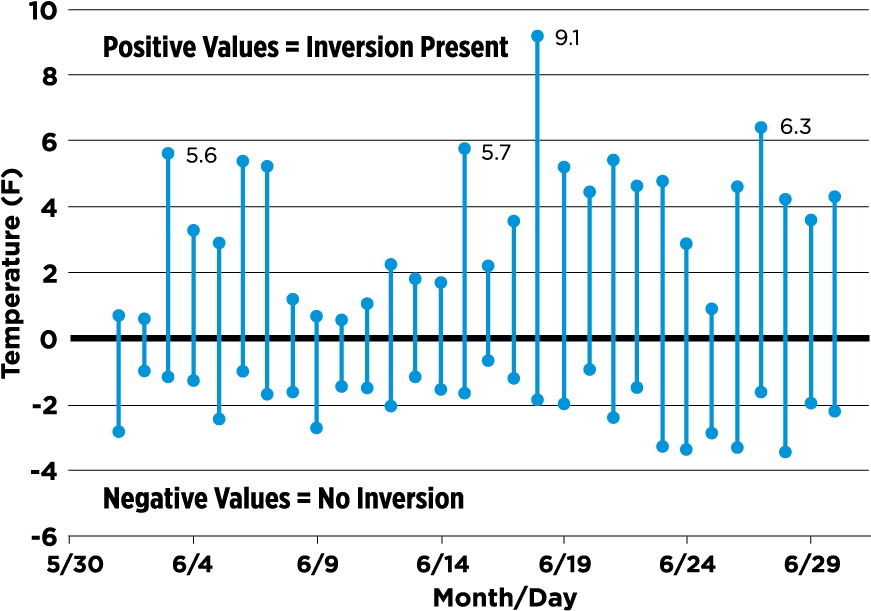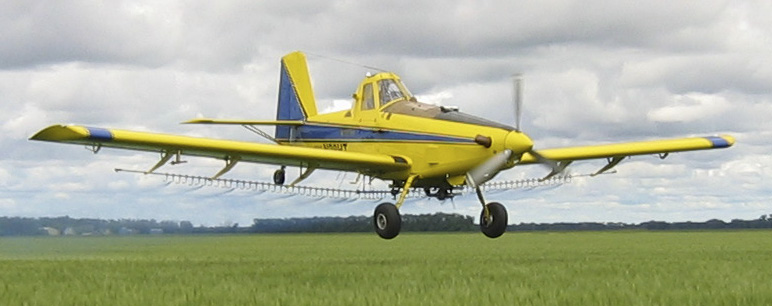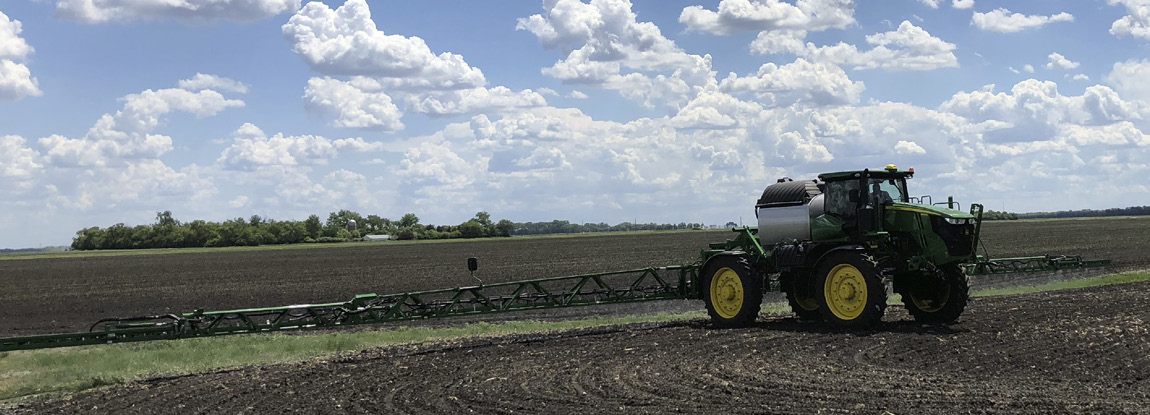Late afternoon spraying (two to three hours before sunset) has been found to be one of the worst times to spray. This is the time when inversions are beginning to form and often will intensify after sunset and continue all night.
Figure 11 is an accumulation of data from 11 NDAWN sites during June, July and August in the summer of 2017. It also shows that inversions usually will decrease in intensity by sunrise and usually are not a factor one to two hours after sunrise. This is due to warming of the air at the Earth’s surface as the air begins to rise, reducing the effects of the inversion.
Decreasing solar heating by mid to late afternoon causes convection cells to weaken, cumulus clouds to begin evaporating and wind speeds to decrease. Terrestrial radiation cools the surface fastest when skies are mostly clear, the air is dry and wind speeds are low. As the surface temperature drops below the adjacent air temperature, heat is conducted from warmer air to the cooler surface, where it’s lost as terrestrial radiation.
In addition, heat is conducted to the surface from warmer soil below it. This is the beginning of an air temperature inversion. These processes continue, causing a slow, steady decrease in the surface temperature and air temperature near the surface (Figure 4).
As the cooling continues, the inversion steadily intensifies and its height grows. Generally, the transition from an unstable to a very stable (inversion) lower atmosphere begins about one to three hours before sunset, but it can happen earlier.
During a study at the North Dakota State University Microclimatic Research Station in the late 1980s and 1990s, air temperatures were measured with shaded sensors at five heights ranging from 4 inches to 5 feet above a turf-covered surface. These data indicate that inversions in the lowest 5 feet sometimes begin forming three, four and even five hours before sunset.
Based on these data and other observations, evening inversions pose a greater risk for spray drift than morning inversions. This is because evening inversions, once formed, are very persistent as long as skies remain clear. The inversion will continue to be maintained until shortly after sunrise. Usually only windy or cloudy conditions will weaken or disrupt it, and both of these usually require some significant weather or air mass change.
Low wind speeds two to three hours before sunset may appear to be ideal conditions for pesticide application, but once again, this can be deceiving. When accompanied by clear skies, these conditions are ideal for rapid inversion formation.
An inversion, plus low
wind speed, is the best possible situation for long distance damaging drift
of spray droplets.
A telltale sign that an inversion already has formed is road or field dust rising slowly or hanging in the air near the surface. The dust tends to drift along with the wind but dissipates very slowly. Similarly, a strong odor you normally don’t smell or distant sounds you normally don’t hear also indicate the presence of an inversion.
Some aerial applicators have planes equipped with smokers. This allows them to release smoke and observe how it moves and dissipates, which will help discern the presence of an inversion.
Another inversion indicator for aerial applicators is the presence of smooth air that usually accompanies an inversion. Although this is a useful indicator during morning inversions, it may not be useful in the evening because of the time the inversion takes to reach typical aerial application heights.
During clear, calm evenings, inversion formation begins with surface cooling and then air very near the surface is cooled. However, the top of this cool air increases very slowly because the air is cooling by conduction, which is a very slow process. Thus, the cool air may take several hours to reach a height of 12 to 14 feet, depending on conditions.
Evening is very different from mornings for inversion formation. During a clear morning, an inversion that formed the previous evening or night is dissipating after sunrise and the soil or plant surface is heating. But on a clear evening with low wind speeds, the applicator must be extremely observant because an inversion (Figure 11) already may be forming and is intensifying steadily and growing in height.
Figure 12 is an example of how often a temperature inversion occurred at Grafton, N.D., during June 2018. A positive value indicates an inversion, and a negative value indicates no inversion. This shows that an inversion occurs almost every day unless adverse weather occurs.
The strongest inversion was at 9.3 F. All temperature readings were at the NDAWN site, which measures at 1 meter and 3 meters.
Figure 12. Daily minimum and maximum inversion temperatures, Grafton, N.D., June 2018. Temperature difference was measured at 1 meter and 3 meters (F) above ground level at the NDAWN station. Details for June 2018 is available at:
https://ndawn.ndsu.nodak.edu/station-info.html?station=77.
